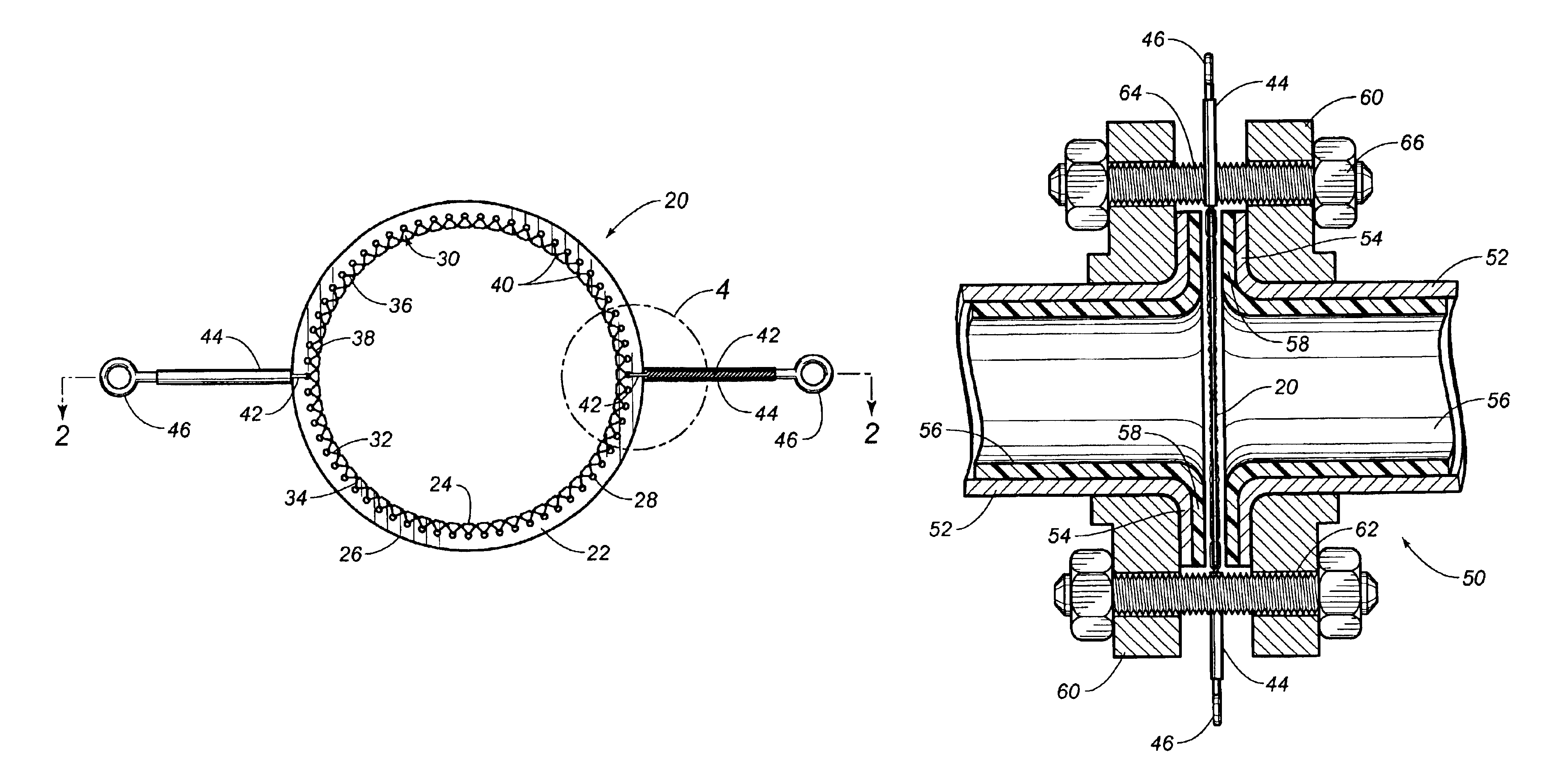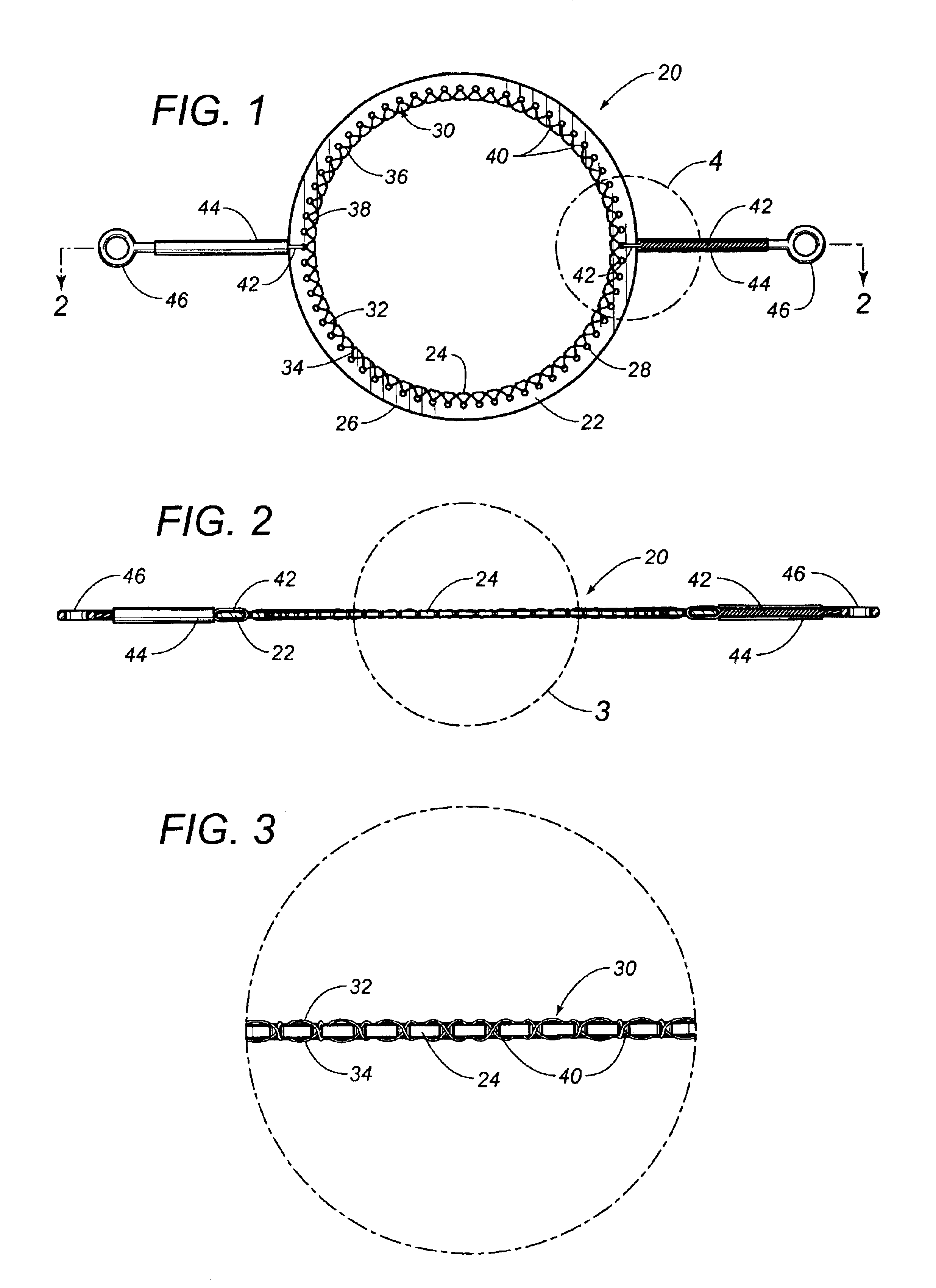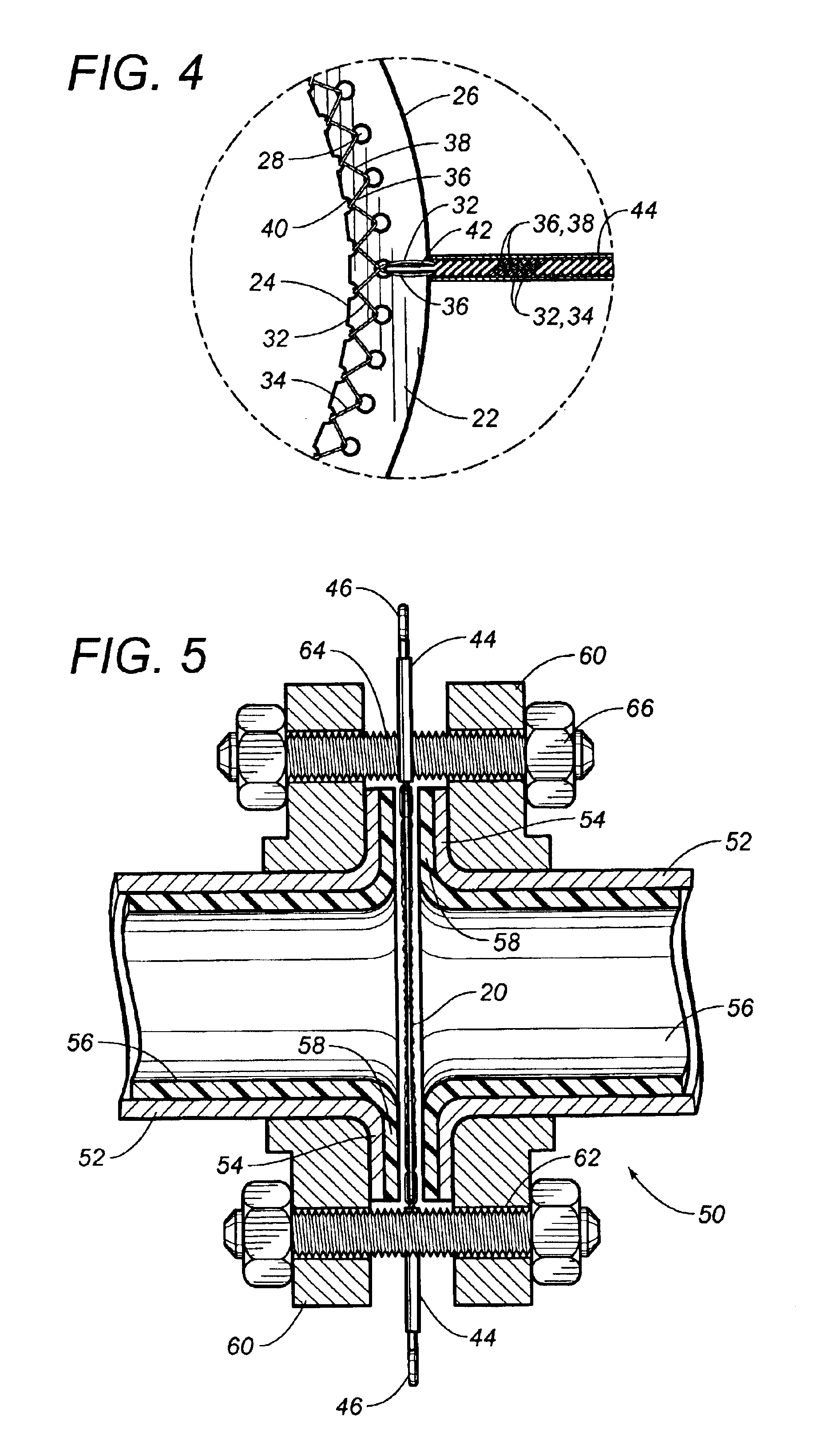Welded flange connection
a technology of welded flanges and flanges, which is applied in the direction of hose connections, other domestic objects, mechanical instruments, etc., can solve the problems of high monitoring costs, many hazardous chemicals carried by these pipe systems, and damage to the environment and to human life, so as to improve seals, easy disassembly, and easy repair
- Summary
- Abstract
- Description
- Claims
- Application Information
AI Technical Summary
Benefits of technology
Problems solved by technology
Method used
Image
Examples
Embodiment Construction
The present invention provides improved methods and apparatus for welding plastic, flanged, pipe members. Such members include both plastic pipe and plastic-lined pipe. A strong, fluid-tight thermoplastic weld is produced by the novel, non-obvious methods of the present invention using a weld insert designed specifically for use in those methods.
The plastic pipes and linings with which the methods of the present invention can be used may be constructed of any appropriate plastic material. Pipe materials which are most suitable for the disclosed methods include all melt processable, thermoplastic materials. Examples of such materials include high density polyethylene (HDPE), medium density polyethylene (MDPE), low density polyethylene (LDPE), linear low density polyethylene (LLDPE), chlorotrifluoroethylene (CTFE), ethylene-tetrafluoro ethylene (ETFE), ethylenechlorotrifluoro ethylene copolymer (E-CTFE), polypropylene (PP), perfluoro-ethylenepropylene copolymer (FEP), ethylene-propyle...
PUM
| Property | Measurement | Unit |
|---|---|---|
| voltage | aaaaa | aaaaa |
| thickness | aaaaa | aaaaa |
| diameter | aaaaa | aaaaa |
Abstract
Description
Claims
Application Information
 Login to View More
Login to View More - R&D
- Intellectual Property
- Life Sciences
- Materials
- Tech Scout
- Unparalleled Data Quality
- Higher Quality Content
- 60% Fewer Hallucinations
Browse by: Latest US Patents, China's latest patents, Technical Efficacy Thesaurus, Application Domain, Technology Topic, Popular Technical Reports.
© 2025 PatSnap. All rights reserved.Legal|Privacy policy|Modern Slavery Act Transparency Statement|Sitemap|About US| Contact US: help@patsnap.com



